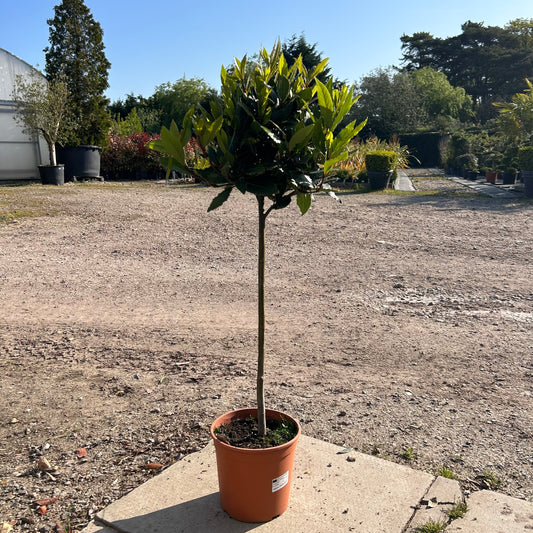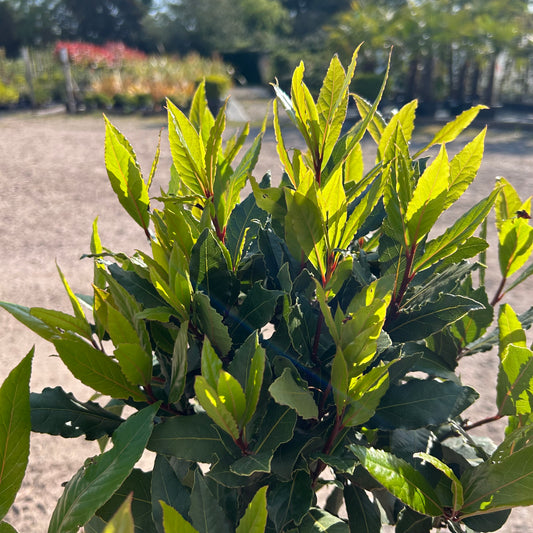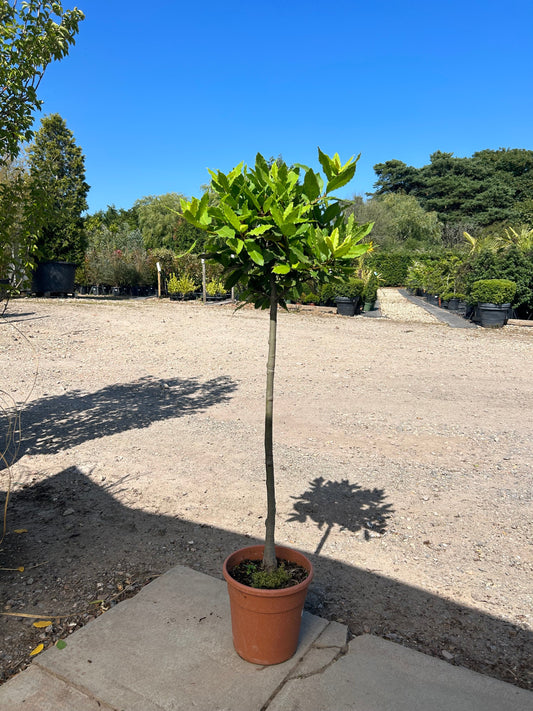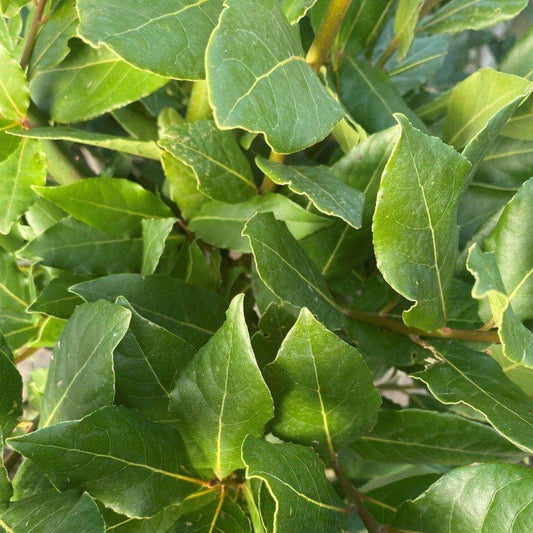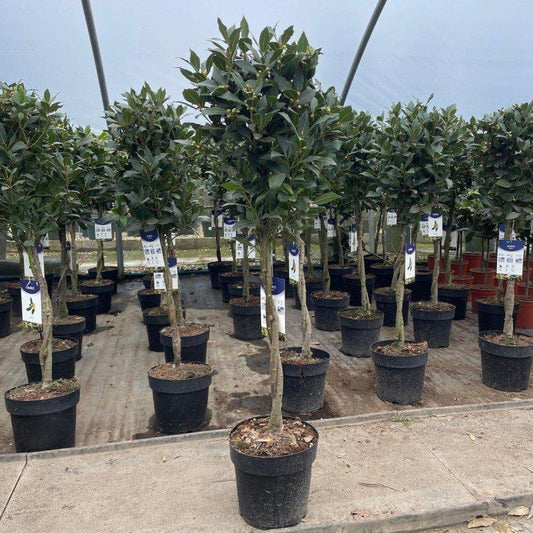Inside this Article:
- Introduction
- Why Citrus?
- Top Citrus Plants to Add to Your Garden
- Buddha's Hand Citrus Tree
- Calamondin Citrus Tree
- Chinotto Citrus Tree
- Grapefruit Citrus Tree
- Kaffir Lime Citrus Tree
- Lemon Citrus Tree
- Lime Citrus Tree
- Mini Calamondin Citrus Tree
- Mini Kaffir Lime Citrus Tree
- Orange Citrus Tree
-
FAQs about Citrus Plants in the UK
- Can citrus trees survive in the UK climate?
- Which citrus varieties are best suited for UK growing conditions?
- How do I protect my citrus plants from frost damage?
- What type of soil is best for citrus plants in the UK?
- How much sunlight do citrus plants need in the UK?
- What are the best practices for watering citrus plants in the UK?
- How do I fertilize citrus plants in the UK?
- What are the common pests and diseases affecting citrus plants in the UK?
- Can citrus plants be grown in containers in the UK?
- How long does it take for citrus trees to bear fruit in the UK?
- Do citrus plants need to be pruned in the UK?
- How do I encourage flowering and fruiting in my citrus plants?
- Can citrus plants be grown indoors in the UK?
- What are the signs of stress in citrus plants, and how can they be addressed?
- Are there any companion plants that benefit citrus growth in the UK?
- How do I transplant citrus trees in the UK?
- What are some organic pest control methods for citrus plants in the UK?
- Can citrus plants be propagated in the UK, and if so, how?
- How do I prevent nutrient deficiencies in citrus plants in the UK?
- What are the best practices for winter care of citrus plants in the UK?
Discover the vibrant world of citrus plants with our top picks to add zest and color to your garden. From the enigmatic Buddha's Hand to the classic Orange Citrus Tree, each plant offers unique flavors, scents, and aesthetics to enrich your gardening experience.
Introduction
Embarking on a citrus-growing journey brings not only the joy of harvesting fresh fruits but also the pleasure of enjoying the lush foliage and fragrant blossoms these plants offer. Citrus trees can transform any space, providing a sensory experience that delights throughout the year. In this guide, we'll explore the top citrus plants that you should consider adding to your garden today.
Why Citrus?
The Joy of Growing Citrus Plants
Citrus plants are more than just fruit bearers; they're a multisensory addition to any garden. They offer year-round glossy green leaves, fragrant flowers, and colorful fruits that can brighten up any space. Plus, growing your own citrus means you'll have fresh, organic fruit right at your doorstep.
Choosing the Right Citrus Plant
Selecting the right citrus plant depends on your climate, space, and personal preference. Whether you have a sprawling garden or a small balcony, there’s a citrus plant that can fit your needs.
Top Citrus Plants to Add to Your Garden
Buddha's Hand Citrus Tree
This intriguing citrus plant is known for its unique fruit shape, resembling fingers extending from a hand. Beyond its ornamental value, Buddha's Hand is prized for its zesty fragrance and culinary versatility. Perfect for infusing into spirits or using as a natural air freshener. Learn more about Buddha's Hand.
Calamondin Citrus Tree
A must-have for both indoor and outdoor gardens, the Calamondin Citrus Tree produces small, tangy fruits ideal for marmalades and garnishes. Its compact size and resilience make it a favorite among citrus growers. Explore Calamondin Citrus Trees.
Chinotto Citrus Tree
The Chinotto Citrus Tree, known for its bitter fruits, is a key ingredient in traditional Italian liqueurs and sodas. This tree not only offers culinary benefits but also adds a touch of Mediterranean charm to any garden. Discover the Chinotto Citrus Tree.
Grapefruit Citrus Tree
For those who love a tangy start to their day, the Grapefruit Citrus Tree is ideal. This tree produces large, juicy fruits known for their health benefits and refreshing taste. Find out more about Grapefruit Citrus Trees.
Kaffir Lime Citrus Tree
The Kaffir Lime Citrus Tree is essential for any culinary enthusiast, especially those fond of Southeast Asian cuisine. Its leaves and zest add an incomparable flavor to dishes. Learn about Kaffir Lime Citrus Trees.
Lemon Citrus Tree
A classic choice, the Lemon Citrus Tree is versatile and indispensable in any kitchen. From lemonades to garnishes, the uses for lemon are endless. Explore Lemon Citrus Trees.
Lime Citrus Tree
Similar to its lemon counterpart, the Lime Citrus Tree is a must-have for its culinary versatility and the refreshing zest its fruits offer. Perfect for drinks, cooking, and even natural cleaning agents. Discover Lime Citrus Trees.
Mini Calamondin Citrus Tree
Ideal for small spaces, the Mini Calamondin Citrus Tree offers the same tangy fruits as its larger counterpart but in a more compact form. Find out more about Mini Calamondin Trees.
Mini Kaffir Lime Citrus Tree
For those with limited space but a love for Southeast Asian flavors, the Mini Kaffir Lime offers the distinctive leaves of the Kaffir Lime in a size suitable for small gardens or balconies. Explore Mini Kaffir Lime Trees.
Orange Citrus Tree
No citrus collection is complete without the Orange Citrus Tree. Known for its sweet, vitamin C-rich fruits, it's a staple in any garden. Learn about Orange Citrus Trees.
FAQs about Citrus Plants in the UK
-
Can citrus trees survive in the UK climate?
- Yes, citrus trees can survive in the UK climate, particularly in regions with milder winters and warm summers. While they prefer warmer climates, with proper care and protection from frost, many citrus varieties can thrive in the UK. Choosing cold-hardy varieties and providing adequate shelter during colder months can enhance their chances of survival.
-
Which citrus varieties are best suited for UK growing conditions?
- Varieties such as 'Satsuma', 'Kumquat', and 'Meyer Lemon' are among the most suitable for UK growing conditions. These varieties are more cold-hardy and can withstand cooler temperatures better than others. Their ability to adapt to the UK climate makes them popular choices for citrus growers in the region.
-
How do I protect my citrus plants from frost damage?
- To protect citrus plants from frost damage, consider covering them with frost cloth or blankets during cold nights. This helps to trap heat and prevent freezing temperatures from harming the plant. Placing citrus trees against a south-facing wall or in a greenhouse can also provide additional warmth and protection against frost damage.
-
What type of soil is best for citrus plants in the UK?
- Citrus plants prefer well-draining, slightly acidic soil rich in organic matter. A mixture of loam, sand, and compost works well for growing citrus in the UK. This type of soil provides good drainage while retaining moisture and nutrients essential for healthy citrus growth. Ensuring the soil is well-prepared before planting is crucial for the long-term health of citrus trees in the UK.
-
How much sunlight do citrus plants need in the UK?
- Citrus plants thrive in full sun, requiring at least 6-8 hours of sunlight per day for optimal growth and fruit production. Placing them in a sunny spot, preferably facing south, ensures they receive adequate sunlight throughout the day. In the UK, where sunlight can be limited, maximizing exposure to sunlight is essential for the health and productivity of citrus plants.
-
What are the best practices for watering citrus plants in the UK?
- Water citrus plants deeply but infrequently, allowing the soil to dry slightly between waterings. This helps prevent overwatering, which can lead to root rot, while ensuring the plant receives adequate moisture. Consistent watering during the growing season, coupled with reduced watering in winter when growth slows, helps maintain the health and vigor of citrus plants in the UK.
-
How do I fertilize citrus plants in the UK?
- Fertilize citrus plants with a balanced fertilizer formulated for citrus, applying it according to package instructions during the growing season (spring through summer). This provides essential nutrients necessary for healthy growth and fruit production. Avoid fertilizing in late autumn and winter when growth slows, as excessive fertilization during this time can disrupt the plant's natural growth cycle.
-
What are the common pests and diseases affecting citrus plants in the UK?
- Common pests affecting citrus plants in the UK include aphids, scale insects, and citrus leaf miners, while diseases such as citrus canker and citrus greening can also pose significant threats. Regular monitoring and early intervention are essential for managing pest and disease problems in citrus plants. Implementing cultural practices such as proper sanitation and maintaining plant health can help prevent outbreaks and minimize damage to citrus trees in the UK.
-
Can citrus plants be grown in containers in the UK?
- Yes, citrus plants can be grown in containers in the UK, making them suitable for patio or balcony gardens. Choosing compact or dwarf varieties suited for container cultivation and using a well-draining potting mix are essential for success. Providing adequate sunlight, water, and nutrients, along with protection from frost during winter, ensures healthy growth and fruit production of citrus plants in containers in the UK.
-
How long does it take for citrus trees to bear fruit in the UK?
- Citrus trees typically start bearing fruit within 2-3 years of planting, although this can vary depending on the variety, growing conditions, and care provided. Dwarf varieties may bear fruit sooner than standard-sized trees, making them popular choices for home gardeners in the UK. While it requires patience, the reward of harvesting homegrown citrus fruits is well worth the wait for citrus growers in the UK.
-
Do citrus plants need to be pruned in the UK?
- Yes, citrus plants benefit from pruning to maintain shape, remove dead or diseased branches, and improve air circulation. Pruning in late winter or early spring before new growth begins helps stimulate healthy growth and fruit production. Using clean, sharp pruning shears and following proper pruning techniques ensures minimal stress and promotes the overall health and vigor of citrus plants in the UK.
-
How do I encourage flowering and fruiting in my citrus plants?
- To encourage flowering and fruiting, provide adequate sunlight, water, and fertilizer. Prune selectively to remove overcrowded branches and encourage new growth, as flowering occurs on new wood. Additionally, exposing citrus plants to slight temperature fluctuations, mimicking their natural environment, can stimulate flowering. By creating optimal growing conditions and managing plant health, citrus growers can maximize flowering and fruiting in their plants in the UK.
-
Can citrus plants be grown indoors in the UK?
- Yes, citrus plants can be grown indoors in the UK, particularly in regions with cooler climates. Choosing dwarf or compact varieties suited for indoor cultivation and providing adequate sunlight or supplemental grow lights are essential for success. Indoor citrus plants benefit from consistent temperatures and protection from drafts, making them ideal for growing in the controlled environment of a home or greenhouse in the UK.
-
What are the signs of stress in citrus plants, and how can they be addressed?
- Signs of stress in citrus plants include yellowing leaves, leaf drop, stunted growth, and reduced fruit production. Addressing stress factors such as inadequate watering, nutrient deficiencies, pests, or diseases promptly is essential for maintaining plant health. Providing proper care, including regular watering, fertilization, and pest management, along with ensuring optimal growing conditions, helps alleviate stress and promote the overall well-being of citrus plants in the UK.
-
Are there any companion plants that benefit citrus growth in the UK?
- Yes, companion plants like marigolds, lavender, and basil can benefit citrus growth in the UK by attracting beneficial insects, repelling pests, and improving soil health. These companion plants create a more diverse and balanced ecosystem, reducing the risk of pest infestations and enhancing the overall health and productivity of citrus trees. Planting compatible companion plants alongside citrus trees in the UK garden fosters a mutually beneficial relationship between plants, promoting sustainable and organic citrus cultivation practices.
-
How do I transplant citrus trees in the UK?
- To transplant citrus trees, dig a hole twice the width of the root ball and at the same depth as the previous planting. Carefully lift the tree, retaining as much soil around the roots as possible, and place it in the new hole. Water thoroughly and mulch around the base to retain moisture and suppress weeds. Proper transplanting techniques and post-transplant care help minimize stress and ensure successful establishment of citrus trees in the UK.
-
What are some organic pest control methods for citrus plants in the UK?
- Organic pest control methods for citrus plants in the UK include introducing beneficial insects like ladybugs and lacewings, using neem oil or insecticidal soap sprays, and manually removing pests. Planting companion plants with pest-repelling properties and maintaining a healthy ecosystem helps naturally control pest populations while minimizing the use of synthetic pesticides. Implementing organic pest control strategies promotes environmental sustainability and preserves beneficial insects, contributing to the overall health and resilience of citrus plants in the UK.
-
Can citrus plants be propagated in the UK, and if so, how?
- Yes, citrus plants can be propagated in the UK through methods such as stem cuttings, air layering, and grafting. Stem cuttings are the most common method for home gardeners, involving taking a 6-8 inch cutting from a healthy tree and rooting it in a well-draining potting mix. Air layering and grafting are more advanced propagation techniques used by experienced growers to produce new citrus plants with specific characteristics. Propagating citrus plants in the UK allows growers to expand their orchards and preserve desirable citrus varieties suited to the region's climate.
-
How do I prevent nutrient deficiencies in citrus plants in the UK?
- Preventing nutrient deficiencies in citrus plants in the UK involves regular fertilization with a balanced fertilizer formulated for citrus, maintaining proper soil pH, and incorporating organic amendments like compost to improve soil fertility. Monitoring plants for signs of nutrient deficiencies, such as yellowing leaves or poor growth, and adjusting fertilization accordingly helps maintain optimal nutrient levels for healthy citrus growth and fruit production. By providing essential nutrients and promoting soil health, growers can prevent nutrient deficiencies and ensure the long-term vitality of citrus plants in the UK.
-
What are the best practices for winter care of citrus plants in the UK?
- In winter, protect citrus plants from frost by covering them with frost cloth or moving them to a greenhouse or sheltered area. Reduce watering and avoid fertilizing during the dormant period to prevent stress and encourage dormancy. Monitor plants for signs of cold damage, such as leaf discoloration or frostbite, and provide supplemental heat if necessary. Mulching around the base helps insulate roots and retain soil moisture, while proper winter care ensures the survival and health of citrus plants during the colder months in the UK.


